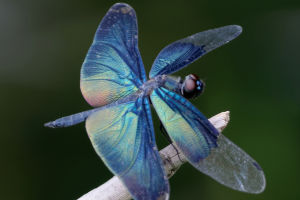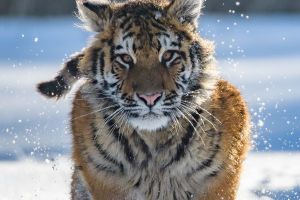The black swan (Cygnus atratus) stands as a symbol of elegance and grace, yet beneath its striking appearance lies a fascinating array of behaviors and adaptations that have allowed it to thrive in diverse environments across Australia and beyond.
From its powerful flight to its intricate communication methods and monogamous mating habits, the black swan exemplifies both resilience and beauty in the animal kingdom.
In flight, black swans exhibit a remarkable sense of coordination and synchronization. Flying together over vast distances, they often form distinctive patterns such as lines or 'V' shapes, with their wings slowly flapping and occasionally emitting a soft whistle. This collective movement serves not only as a means of efficient travel but also as a form of communication among the group.
Communication plays a crucial role in the social dynamics of black swans. Utilizing a combination of vocalizations and visual displays, they convey information about territory, mating readiness, and potential threats.
Their calls range from high-pitched tones reminiscent of a dog's bark to warbling sounds akin to a bugle. Visual signals, such as raising or waving their wings, are used to intimidate predators or assert dominance over rivals.
When confronted by predators, black swans demonstrate a bold defense mechanism. Flapping their wings vigorously to create a loud noise and standing upright with necks extended and beaks pointed downward, they present a formidable deterrent to would-be attackers.
This behavior, coupled with their keen awareness of their surroundings, helps protect both their eggs and vulnerable chicks from a variety of predators including Australian dodos, marsh harriers, and sea eagles.
The social structure of black swans is characterized by monogamy and long-term pair bonding. Mated pairs typically remain together for life, forming strong bonds that endure through the challenges of raising offspring and defending territory.
While territorial aggression is common, black swans also exhibit cooperative behaviors, occasionally mating in colonies and joining juvenile groups before reaching sexual maturity.
Sexual maturity in black swans is attained between 18 and 36 months of age, after which individuals begin to participate in courtship rituals and establish their territories.
Young black swans often form juvenile colonies for one to two years before venturing out to find mates and start families of their own. Remarkably, black swans can live up to 40 years in the wild, a testament to their resilience and adaptability in the face of environmental pressures.
The black swan represents a captivating blend of beauty, intelligence, and adaptability.
From its majestic flight patterns to its intricate communication methods and steadfast commitment to monogamy, this iconic bird continues to captivate and inspire observers around the world.
By studying and appreciating the unique behaviors and adaptations of the black swan, we gain valuable insights into the complex dynamics of the natural world and the remarkable creatures that inhabit it.
In addition to their remarkable social behaviors, black swans exhibit a range of fascinating adaptations for survival. Their sleek black plumage not only aids in thermoregulation but also serves as effective camouflage in their wetland habitats, helping them evade potential predators.
Furthermore, their long, flexible necks enable them to reach submerged vegetation for feeding, while their webbed feet provide efficient propulsion through water. Black swans are also known for their ability to thrive in both freshwater and saltwater environments, showcasing their adaptability to a variety of ecological niches.


